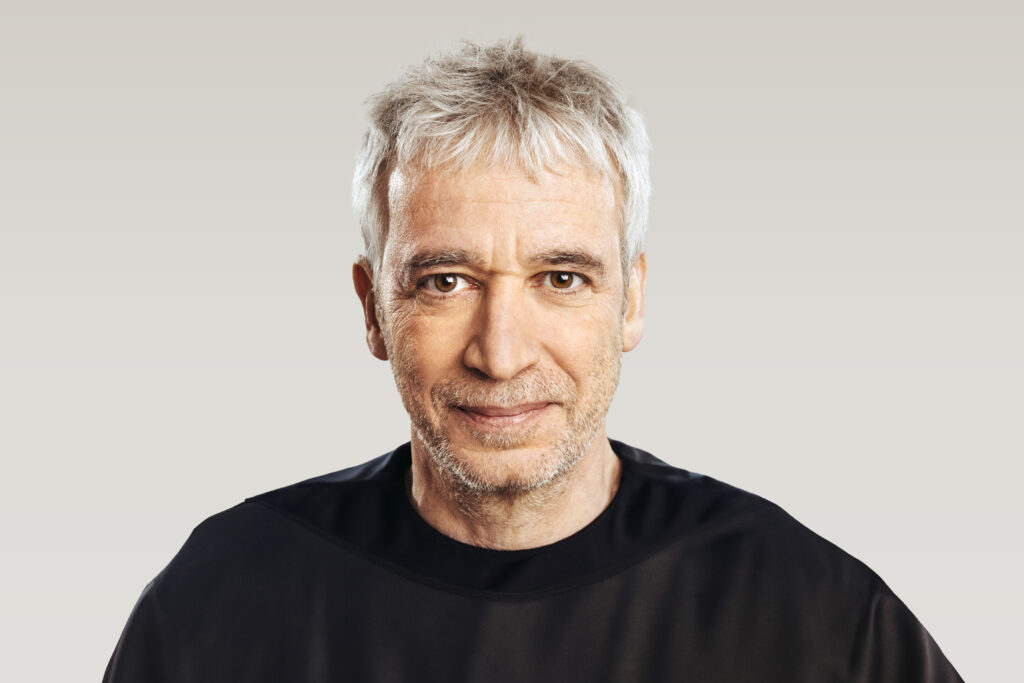The brainers

Laurent de Wilde – Pianist, composer
Laurent de Wilde is a composer, pianist and writer. Since 1987, when he recorded Off the boat, his albums have met with both public and critical success. From the 2000s onwards, he has pursued an increasingly varied range of projects: the continuation of his jazz trio (Over the Clouds, album of the year for Jazz Magazine, Télérama, TSF jazz), electronic music (Fly, Fly Superfly!), in-depth collaborations with artists such as Jacques Gamblin and Abd Al Malik (Prix Constantin, Victoires de la musique) and exploration of the small screen with two documentaries for Arte on Thelonious Monk and Charles Mingus. He recorded Riddles, a two-piano album with African legend Ray Lema, released in October 2016. The duo performs regularly on French and European stages. His biography of pianist and composer Thelonious Monk (Monk, Gallimard) made a lasting impression in 1996, and Les fous du son. D’Edison à nos jours (Grasset) describes the saga of keyboard inventors in the twentieth century. His collaborations are manifold. To mark the centenary of Monk’s birth, in 2017 he released the album New Monk Trio with double bassist Jérôme Regard and drummer Donald Kontomanou, which received the Prix du disque français from the Académie du jazz. In 2018, he was voted artist of the year at the Victoires du jazz awards.
Credit photo Sylvain Gripoix
This brainer takes part in round-table discussions, offers improvisation sessions and the following solo talks:
Are musicians time makers?
In jazz, the rhythm section is the foundation of the time that the music inaugurates, outside current biological time. The bassist and the drummer open up a space when they start playing, they move the ensemble forward, and the challenge is to make this temporal and musical construction fit together harmoniously and efficiently. That gives you an idea of the aesthetic complexity involved!
Monk
Among the geniuses of Black American music, Thelonious Sphere Monk is certainly the strangest, the most singular. He stands out in the jazz landscape like an enigmatic megalith. The man and the music are closed in on themselves. To penetrate this very special universe, you need the sensitivity of an artist and the rigour of an analyst. Laurent de Wilde has succeeded in doing just that. Only a musician as well as a writer could, in the most vivid way, describe to us the world of a protected psychopath, as well as analysing a particular theme, solo or paradoxical conclusion. As a connoisseur of the field, he takes us on a tour of the premises, reveals secret passages and gives us the key once we've entered.
Sound freaks
Who could have been so mad as to come up with the idea of making music with electricity? And how is that even possible? Who's behind these zany instruments, the ancestors of today's digital pianos, these huge organs riddled with electric wires or these surreal keyboards with futuristic notes, whose insane names - Harmonic Telegraph, Theatrophone, Telharmonium, Audion Piano, Musical Waves, B3 Organ, Clavivox or Polymoog - already speak of their madness? Lovers of sound, certainly, but above all great inventors. Their names are Edison, Cahill, Martenot, Mathews, Moog or even Zinovieff and Kakehashi. They are American, English, French, Russian or Japanese, and what they have in common is an insatiably curious and creative spirit, a love of electrical circuits and harmonic notes, and a revolutionary vision of music. Successively, together and sometimes in opposition, they changed the face of sound, taking us from the acoustic piano to today's technological gems in the space of almost a century and a half.